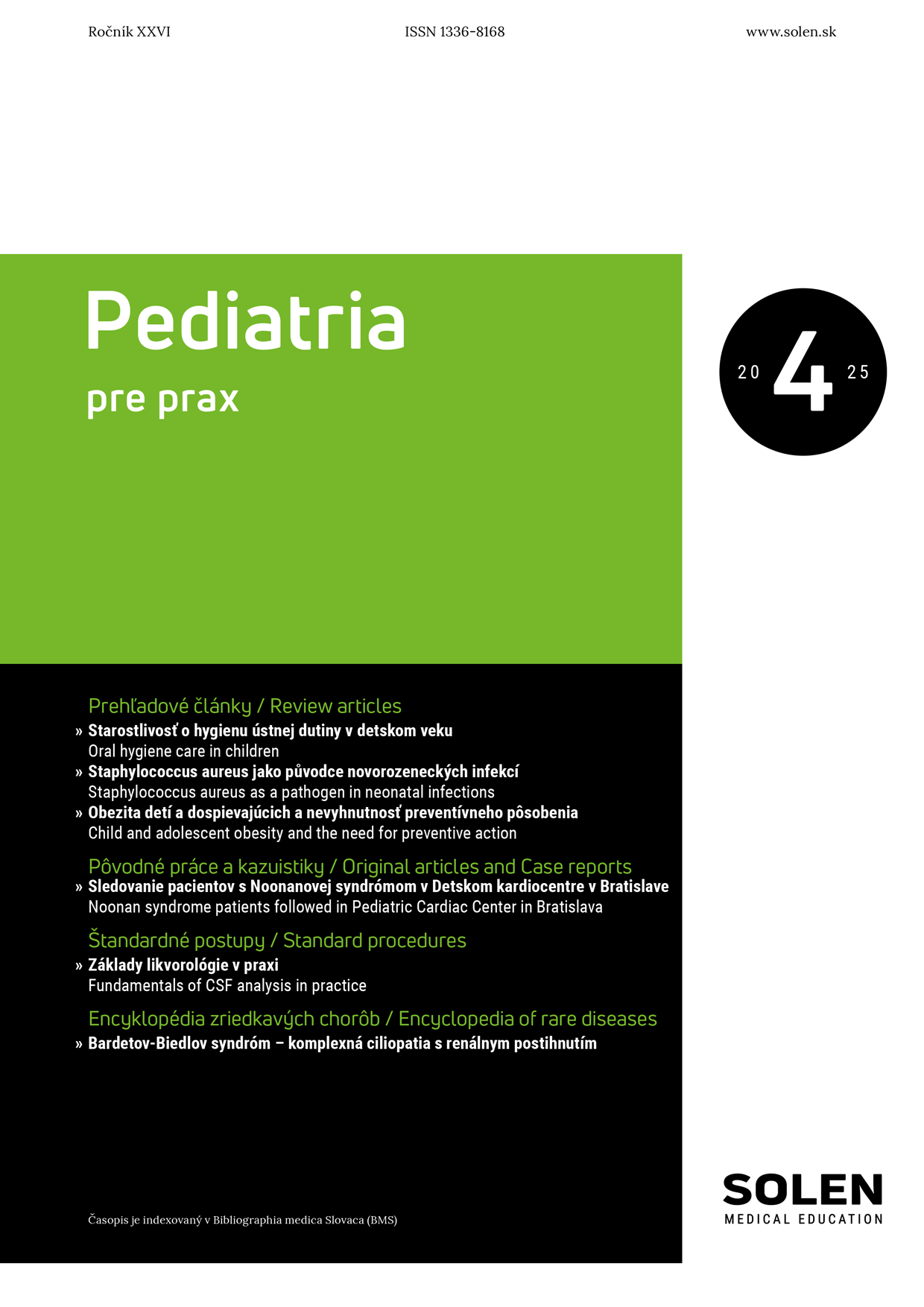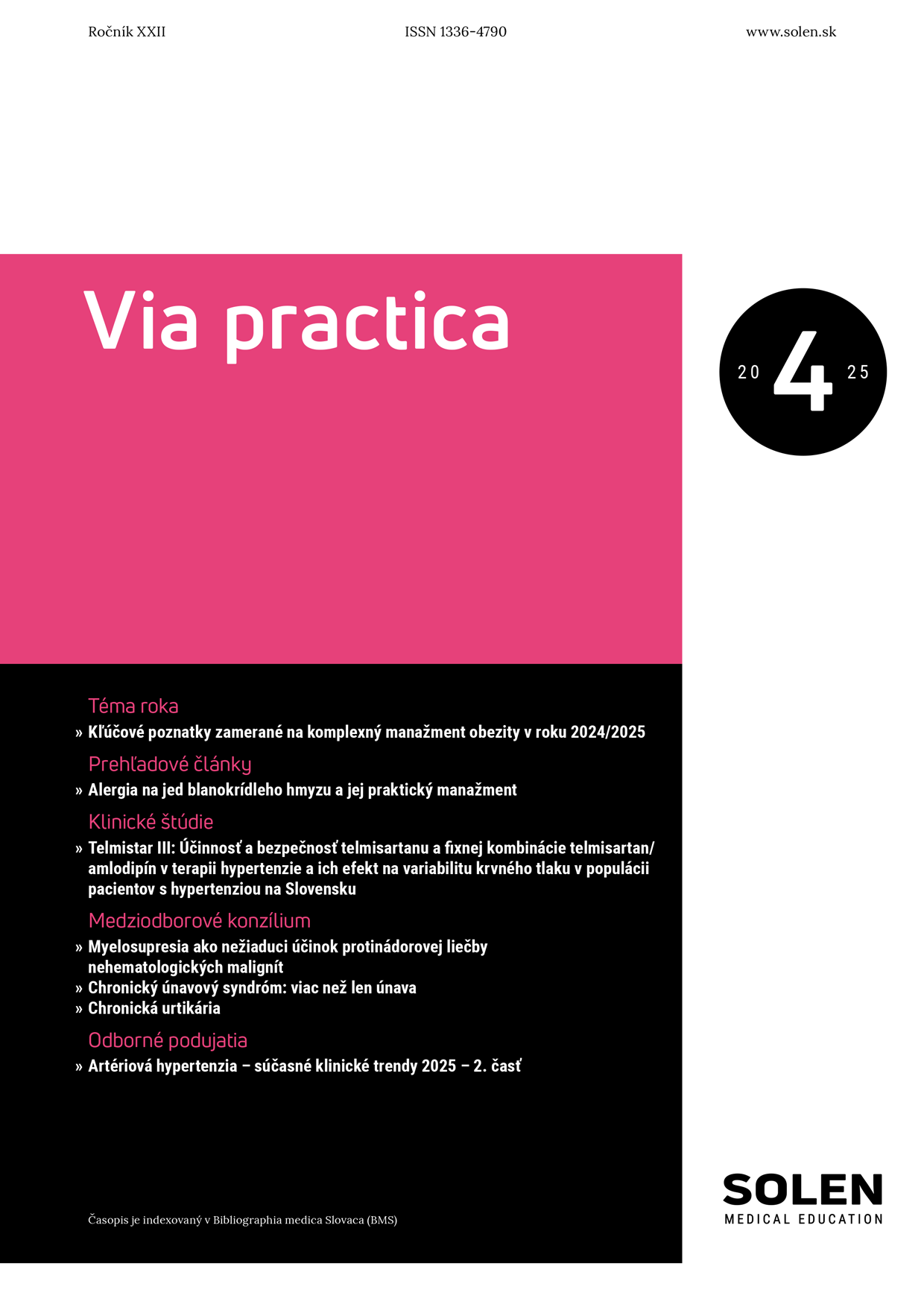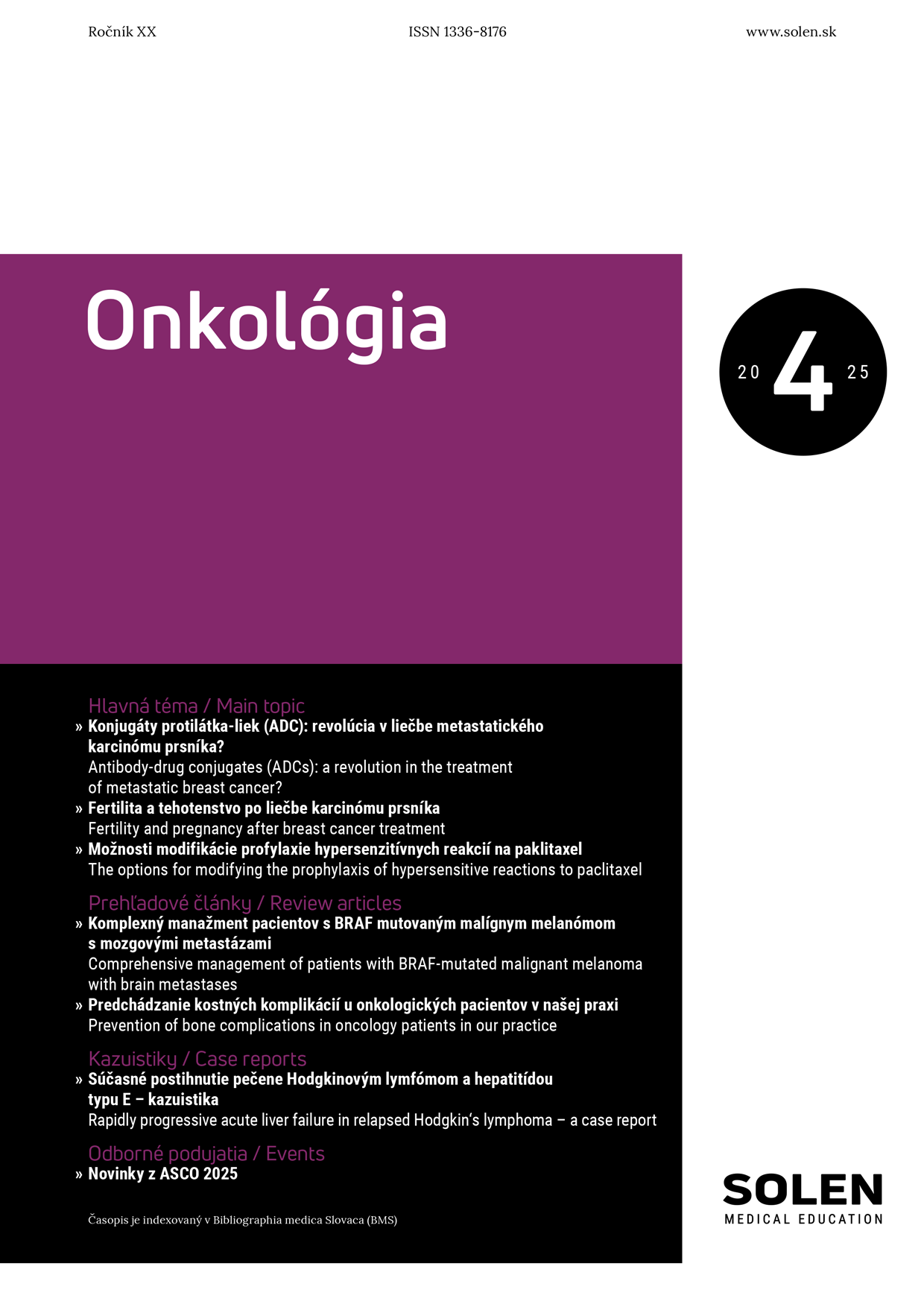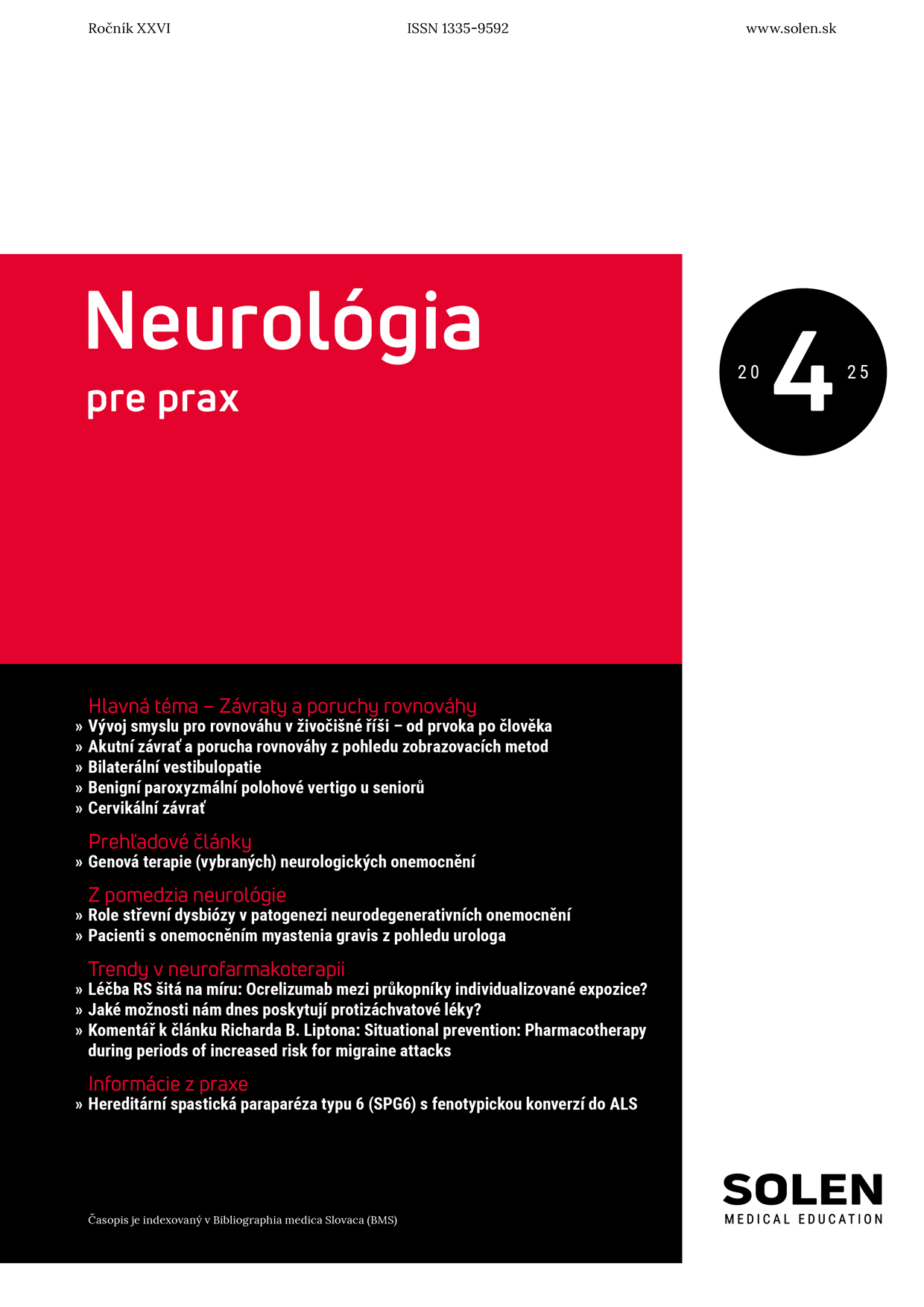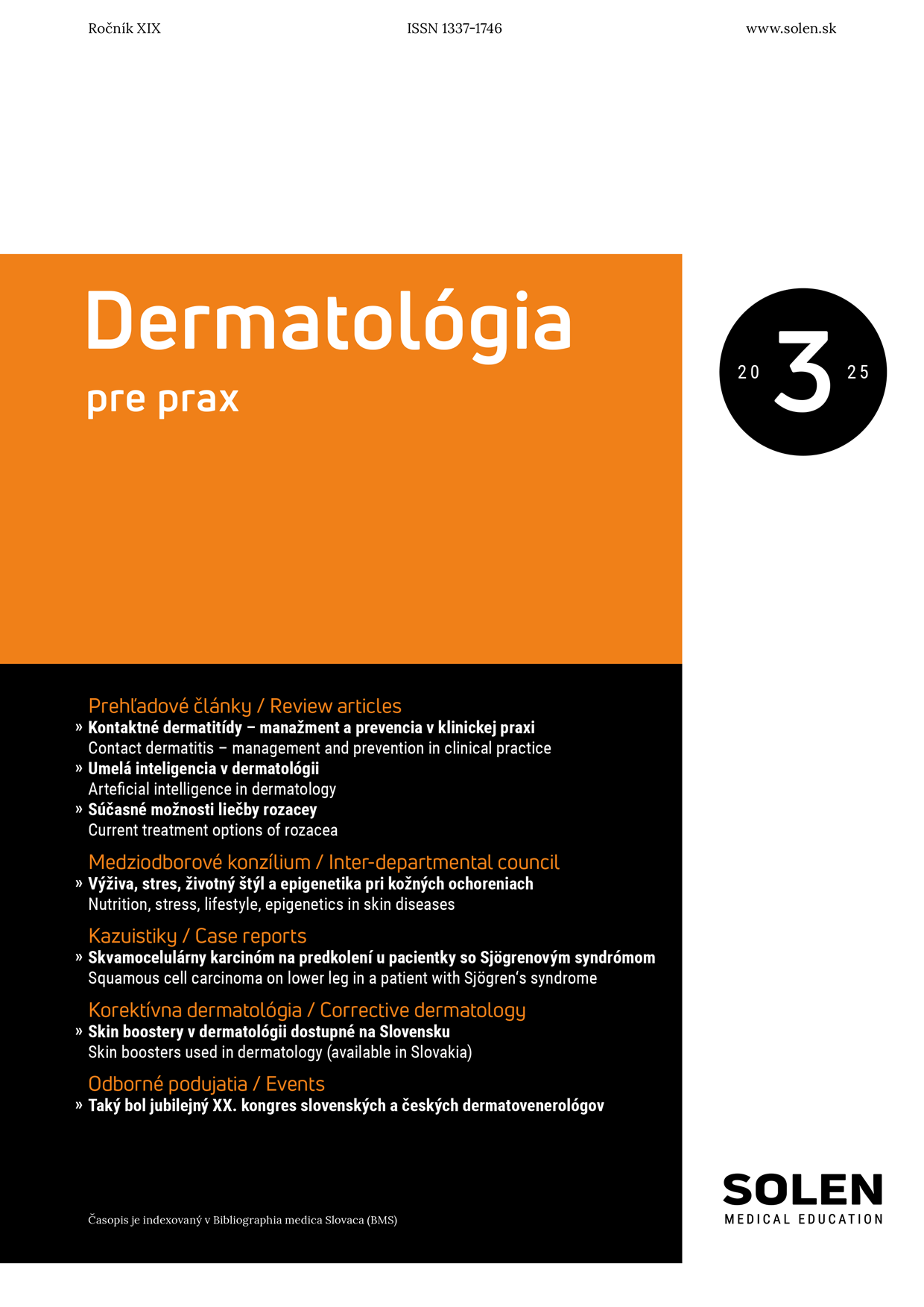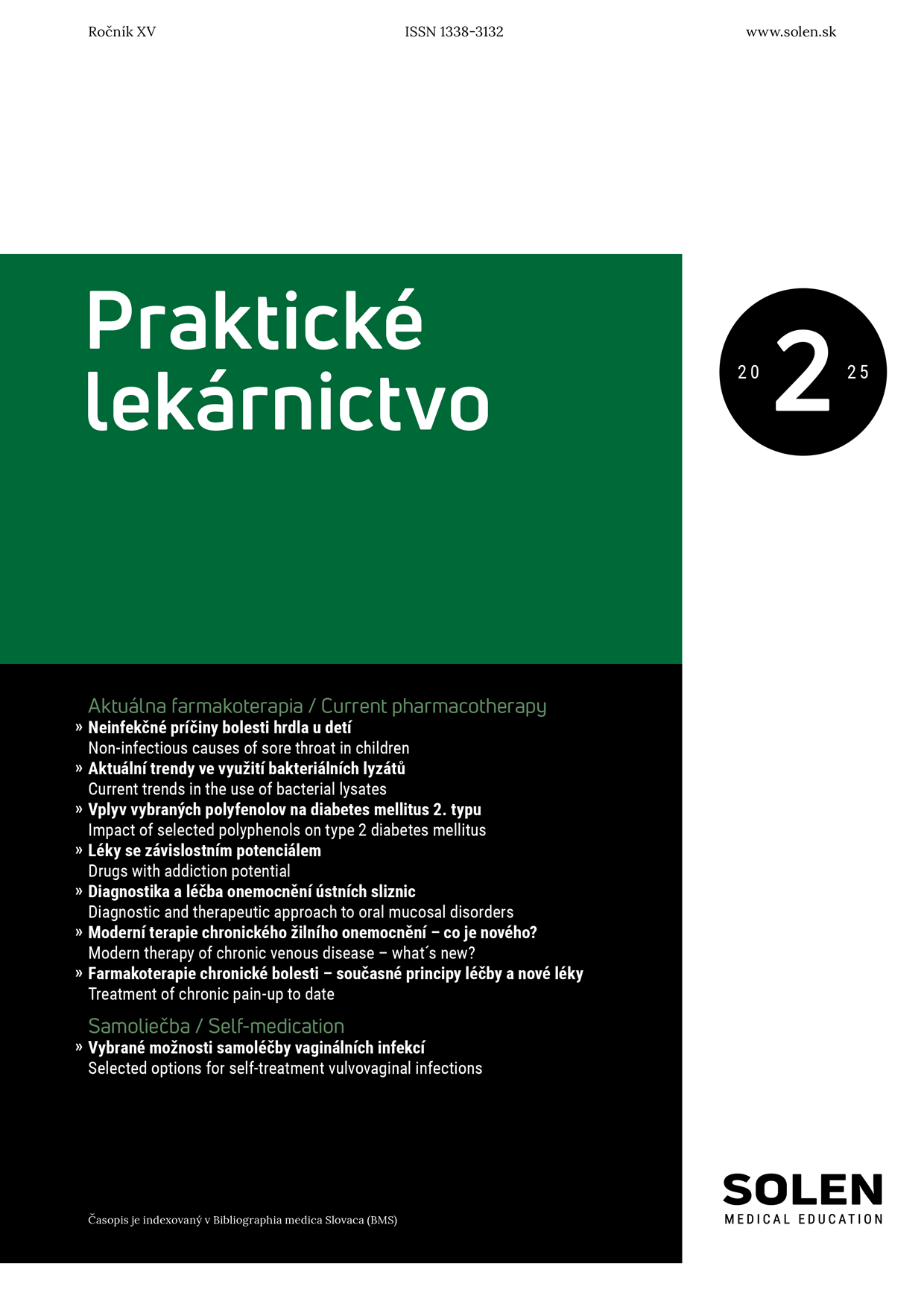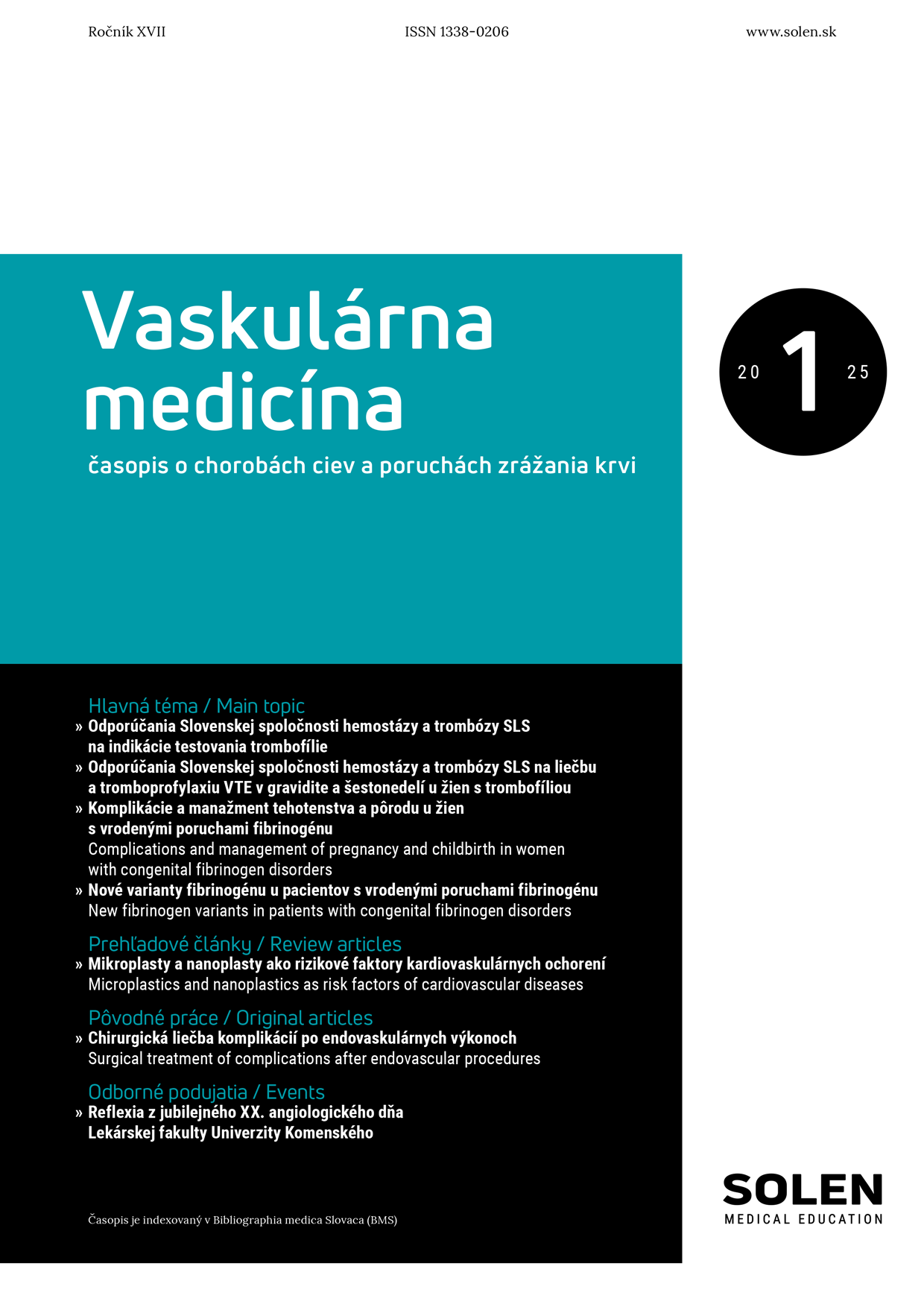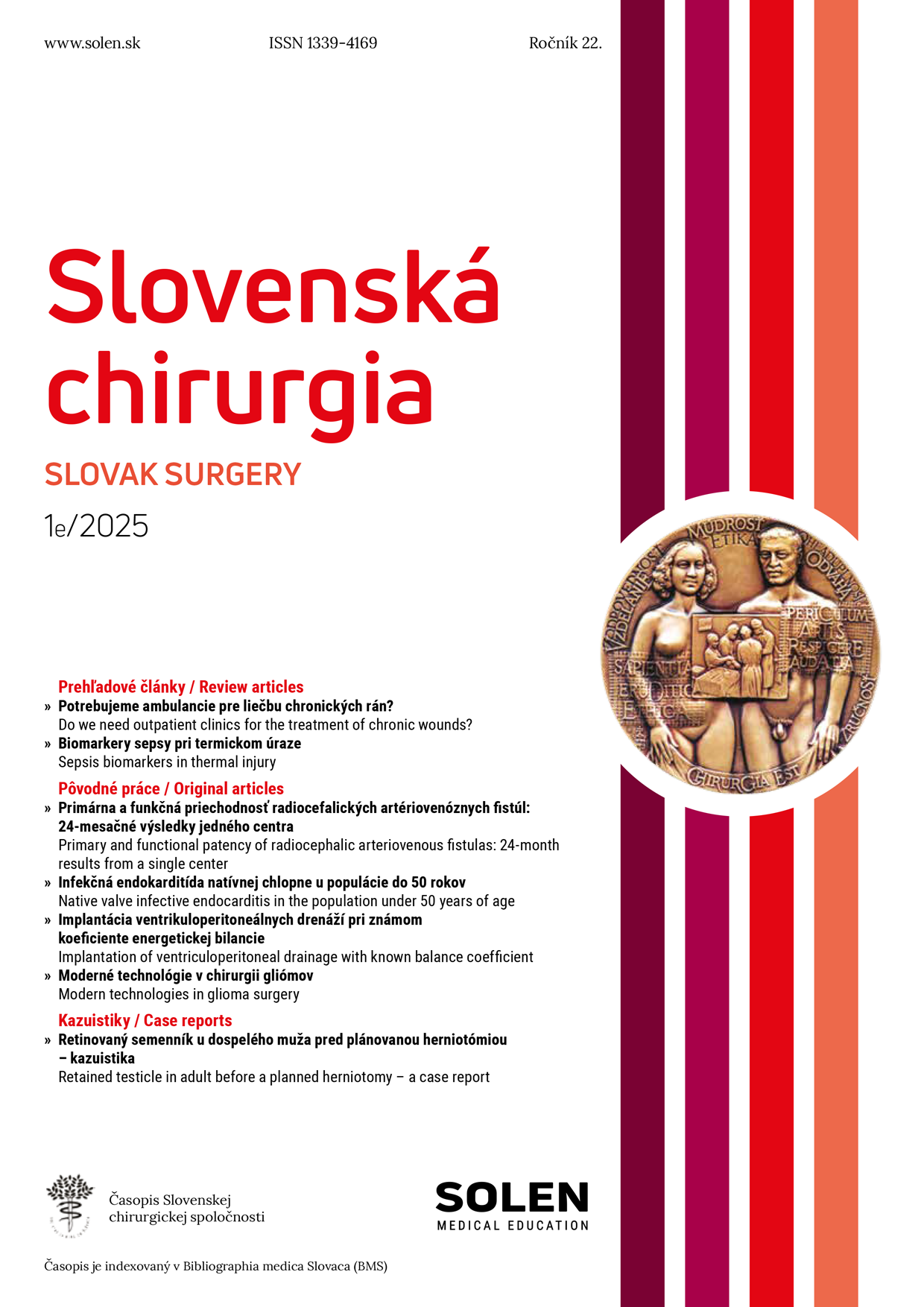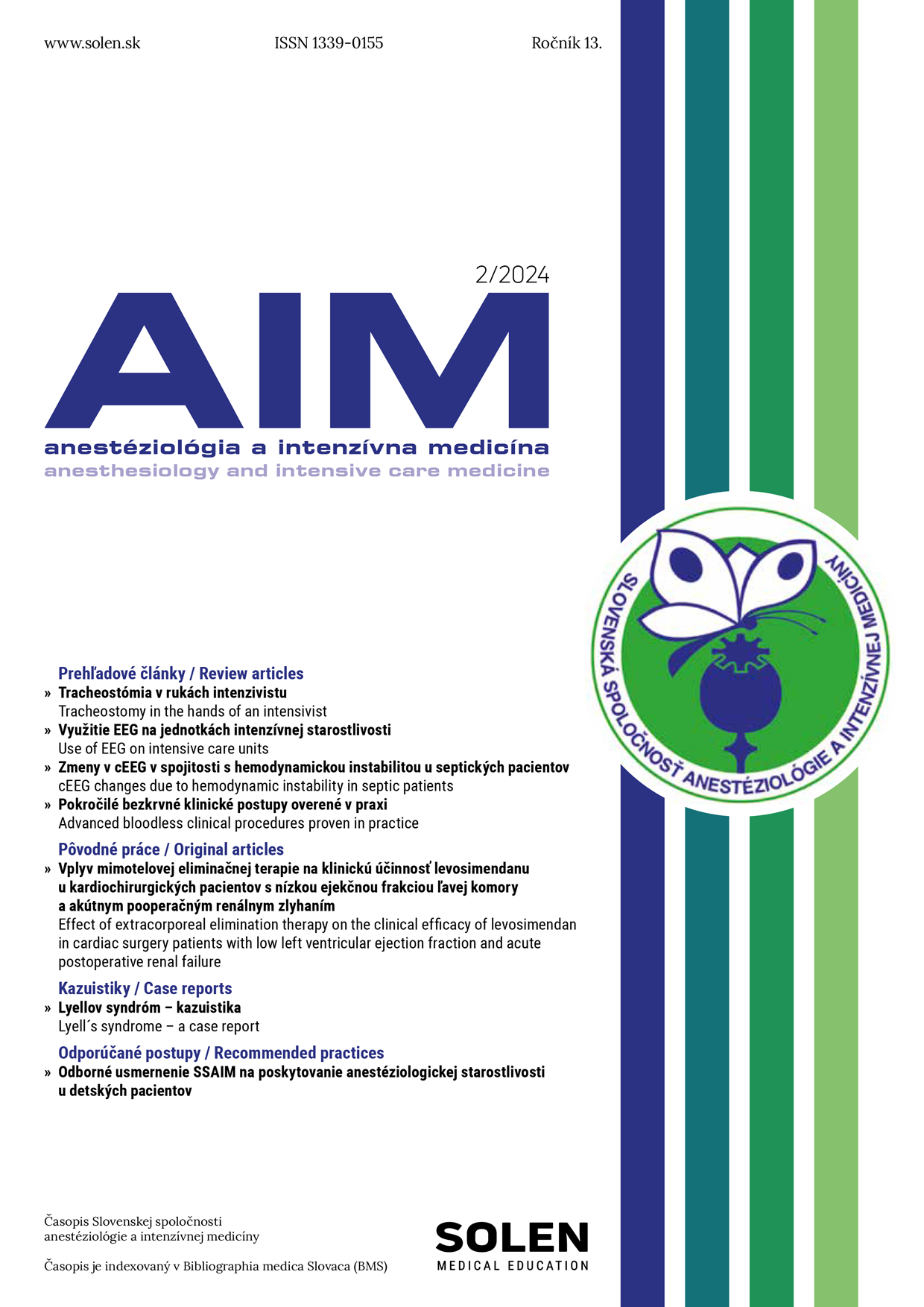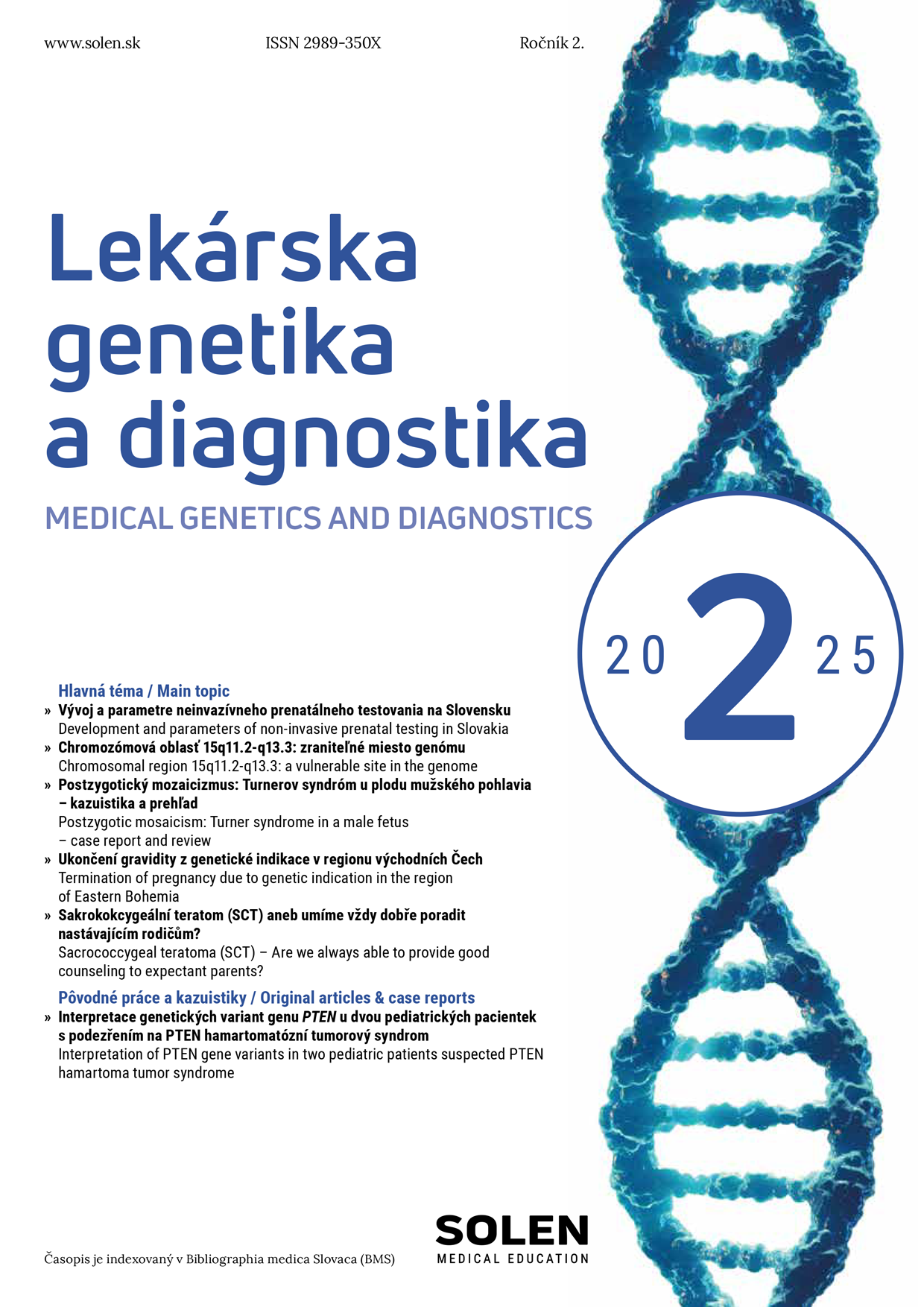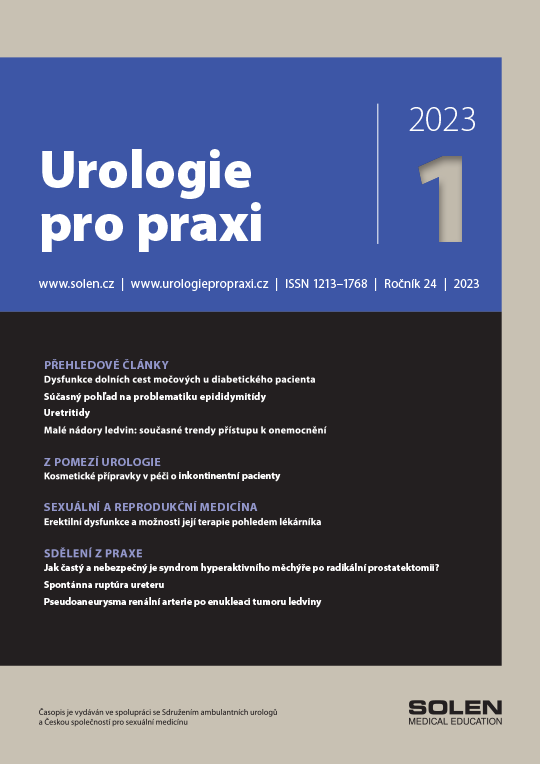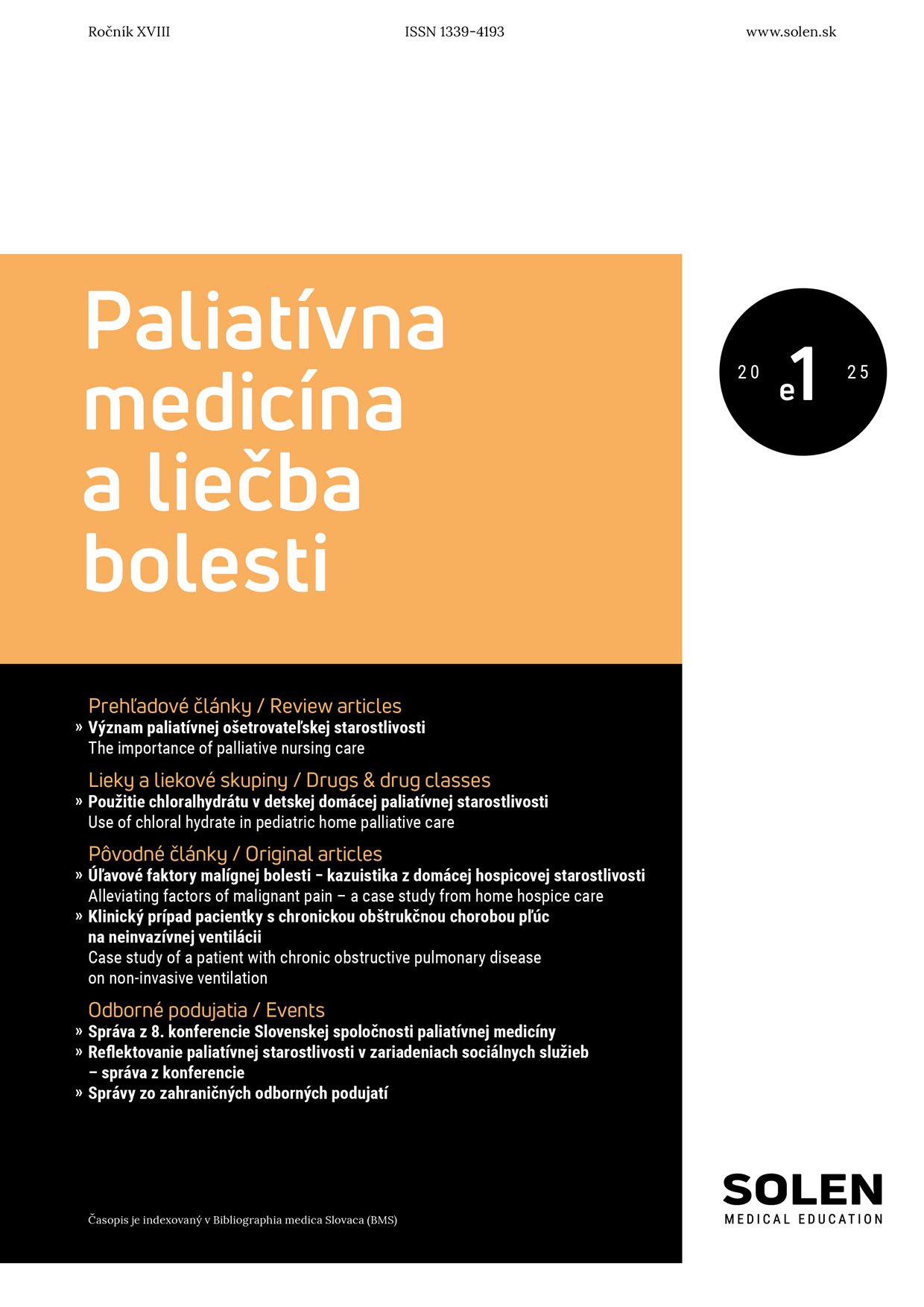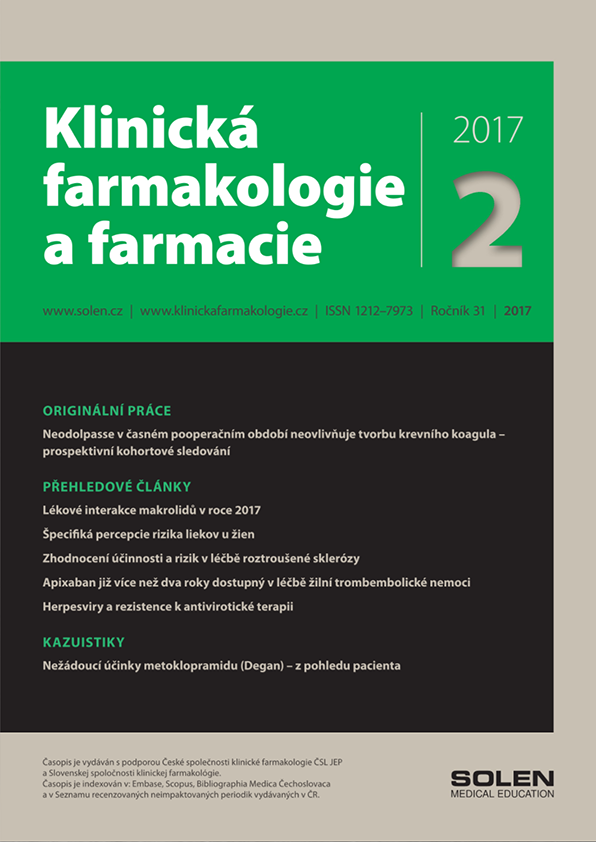Vaskulárna medicína 1/2025
Splanchnic vein thrombosis – overview of the present-day diagnostics and treatment
Splanchnic vein thrombosis (SVT) represents the global term for the thromboses of the splanchnic area: portal (PVT), mesenterial (MVT), and splenic (SPVT) veins as well as Budd-Chiari syndrome (BCS). SVT is a rare but serious thrombotic event with multifactorial etiology. The association with liver diseases, hepatobiliary malignancies, and hematological disorders (myeloproliferative neoplasms, JAK2 V617F mutation, CHIP, paroxysmal nocturnal hemoglobinuria, thrombophília) is clinically relevant. Diagnostics relies on imaging examinations verifying the thrombosis localization and extent. However, the directed screening of the associated disorders is mandatory. Anticoagulant therapy represents the fundamental therapeutic approach, prevents thrombosis progression, and improves survival. Thrombolysis and interventional vascular procedures are beneficial in selected cases. Heparins and vitamin K antagonists represent the traditional and tested anticoagulants. Based on recent data, direct oral anticoagulants, while considering their limitations, appear as an adequate alternative. Patients with severe liver cirrhosis represent the main therapeutic challenge.
Keywords: splanchnic vein thrombosis, myeloproliferative neoplasms, paroxysmal nocturnal hemoglobinuria, thrombophilia, direct oral anticoagulants


